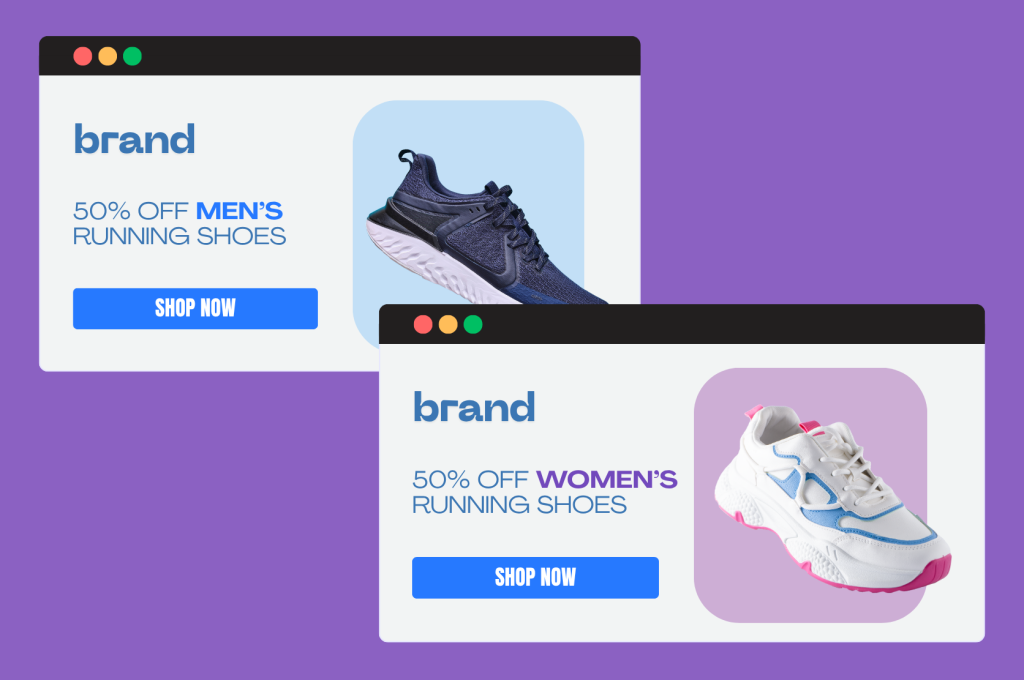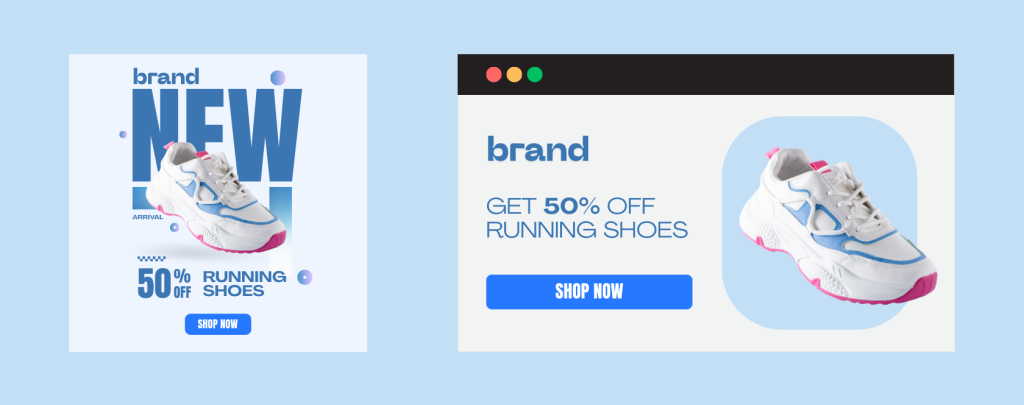Dynamic landing pages are personalized web pages that automatically adapt their content, headlines, and messaging in real time based on visitor data such as location, search keywords, device type, and traffic source.
Unlike static landing pages that display the same content to every visitor, dynamic pages create personalized experiences that speak directly to each user’s specific intent and context.
This technology solves the critical problem of message mismatch between ad campaigns and landing page content, directly addressing why average conversion rates remain stuck around 4.02% when personalized messaging could boost performance significantly.
What does this guide cover?
This guide provides a complete overview of dynamic landing page technology and implementation strategies, including real-world examples, best practices, and step-by-step creation processes. This does NOT cover basic static landing page design principles or general web development tutorials.
Who is this for?
This guide is designed for digital marketers managing PPC campaigns and conversion optimization, along with e-commerce managers seeking to personalize customer experiences. Whether you’re running Google Ads campaigns or building targeted email marketing funnels, you’ll find actionable personalization strategies that directly impact your conversion rates.
Why does this matter?
Average landing page conversion rates hover around 4.02%, leaving massive room for improvement through personalization. Dynamic landing pages can boost revenue by up to 15% compared to static landing pages by delivering relevant messaging that matches visitor intent. This addresses the critical problem of generic messaging that fails to resonate with diverse audience segments.
What you’ll learn:
How dynamic landing pages automatically personalize content for each visitor using real-time data
Proven dynamic elements that increase conversions (headlines, CTAs, location-based content)
Step-by-step process to create dynamic pages using popular platforms and tools
Advanced strategies for optimizing both PPC and SEO traffic through personalization
Using dynamic elements in landing pages like targeted CTAs can significantly improve conversion rates, as seen in examples where conversion rates increased by 31%.
Understanding Dynamic Landing Page Technology
A dynamic landing page is a web page that changes its content, layout, or messaging in real time based on unique visitor attributes and behavioral data. This personalization happens instantly as users arrive, using triggers like search terms, visitor’s location, device type, previous purchases, or referral source to display the most relevant version of your page.
Dynamic pages matter for modern marketing campaigns because they create personalized experiences that directly address individual visitor intent, resulting in higher engagement and conversion rates compared to generic static landing pages.
What Are Dynamic Landing Pages
Dynamic landing pages use real-time personalization technology to customize content based on visitor data collected through URL parameters, cookies, geographic IP detection, and behavioral tracking. The page automatically selects and displays the most relevant headline, images, offers, and calls-to-action for each specific user.
This connects to conversion optimization (CRO) because personalized messaging directly addresses visitor intent, creating a seamless experience from ad copy to landing page content. The increased relevance of personalized landing pages improves form submission rates, reduces bounce rates, and improves return on ad spend (ROAS).
Static Vs Dynamic Landing Pages
Static landing pages display identical content to every visitor regardless of how they arrived or what they’re searching for, while dynamic pages create different versions tailored to specific audience segments.
Here is a simple example: a static landing page for “running shoes” shows the same headline and offer to everyone, but a dynamic page displays “Men’s Running Shoes” to male visitors and “Women’s Running Shoes” to female visitors based on their ad group or previous browsing behavior.

Static pages are simpler, more consistent, and require less maintenance compared to dynamic pages.
That simplicity comes with a few drawbacks. Building on the personalization foundation, static pages miss opportunities for relevance by treating diverse audiences as a single segment, resulting in generic messaging that fails to resonate with specific visitor needs and interests.
How Dynamic Personalization Works
Dynamic personalization operates through several technical mechanisms:
URL parameters (like UTM codes) pass data from ad campaigns to landing pages
JavaScript reads visitor information like location and device type
Server-side scripts query databases for behavioral data like previous purchases or email list membership.
For example, a visitor clicking a Google Ads campaign for “Chicago hotels” might have “?city=chicago” added to the landing page URL, triggering the page to display Chicago-specific headlines, images, and special offers while maintaining the same underlying template structure.
Transition: Understanding these technical foundations sets the stage for exploring specific applications where dynamic personalization delivers measurable business results.
Dynamic Landing Page Applications and Use Cases
Dynamic landing pages excel in digital marketing campaigns where visitor intent varies significantly based on traffic source, search terms, or audience characteristics. The most impactful applications focus on matching page content to the specific reason each visitor arrived.
PPC Campaign Optimization
Dynamic pages improve Google Ads Quality Score and ad relevance by ensuring a perfect message match between ad copy and landing page headlines.
For example, when someone searches for “affordable web design services,” a dynamic page automatically displays “Affordable Web Design Services” as the headline rather than a generic “Professional Web Design” title.
This keyword-to-headline matching typically improves click-through rates by 20-30% and reduces cost-per-click by maintaining high relevance scores.
The dynamic element ensures that visitors see exactly what they expected based on their search terms, creating seamless user experiences that search engines reward with better ad positioning.

SEO Traffic Personalization
Unlike PPC campaigns, where dynamic content can freely match ad copy, SEO requires careful consideration of Google’s duplicate content guidelines when implementing personalization.
The key is creating dynamic elements that enhance user experience without appearing as cloaking to search engines.
Location-based personalization works particularly well for SEO traffic, where a visitor’s location triggers relevant local content like nearby store locations, regional pricing, or area-specific services. This approach maintains a single URL structure while displaying personalized content that improves local search rankings and user engagement.
Behavioral Targeting Implementation
This could be returning visitor recognition, enabling “Welcome back” messaging and personalized recommendations based on previous purchases or browsing history. Or, cart abandonment recovery that becomes more effective when dynamic pages display previously viewed products with special offers, encouraging form submission.
Progressive profiling allows dynamic pages to gradually collect visitor information across multiple visits, displaying different lead magnets or content offers based on what users have already downloaded from your email list or previous interactions with your site.
Transition: These applications demonstrate the versatility of dynamic personalization, leading to practical implementation strategies for creating your own high-converting landing pages.
Building High-Converting Dynamic Landing Pages
Creating effective dynamic pages requires strategic planning of which elements to personalize and systematic implementation using the right platform and tools. Success depends on focusing personalization efforts on the most impactful page elements rather than overwhelming visitors with excessive customization.
Step-by-Step: Creating Your First Dynamic Page
When to use this: For marketers ready to implement basic dynamic personalization with existing marketing campaigns and traffic sources.
Choose Dynamic Elements: Select 2-3 key components to personalize based on campaign goals. Typically, headline, call-to-action button, and hero image work best for initial implementations focusing on message match with ad campaigns.
Set Up URL Parameters: Configure tracking codes like UTM parameters or custom URL variables that will trigger specific content variations. For instance, “?source=facebook&audience=parents” for social media campaigns targeting parent audiences.
Create Content Variations: Develop different versions of your chosen dynamic elements for each audience segment or traffic source. Write headlines that match search terms, design images relevant to visitor demographics, and craft CTAs that reflect the visitor’s stage in your marketing funnel.
Configure Dynamic Content Rules: Use your landing page platform’s built-in tools to set conditions determining when each variation displays. Establish rules like “if source=google AND keyword contains ‘cheap’ then display budget-focused headline and pricing.”
Test and Validate: Verify dynamic functionality across different traffic sources by manually testing various URL parameters and checking that appropriate content variations display correctly on different device types and browsers.
Comparison: Platform Options for Dynamic Landing Pages
Feature | involve.me | ConvertFlow | Unbounce | HighLevel |
Dynamic Text | No-code interactive funnels with AI-powered personalization | Advanced personalization | Dynamic keyword insertion | CRM integration |
Ease of Use | Designed for marketers and agencies, no coding required | Moderate learning curve | User-friendly interface | Requires technical setup |
Pricing | Competitive pricing with flexible plans starting at $29/month | $29/month | $90/month | $97/month |
Integration | Integrates with major marketing and CRM platforms | Multi-platform | Wide integrations | All-in-one solution |
involve.me offers the best balance of advanced personalization features and reasonable pricing for most businesses, while Unbounce provides the most comprehensive dynamic features for enterprise-level campaigns requiring sophisticated personalization rules.
Generate an on-brand landing page in seconds.
Struggling to visualize how it works? Enter the URL of your website and try out dynamic landing page features for free
Transition: Even with the right platform, implementation challenges can derail dynamic landing page projects without proper planning and troubleshooting strategies.
Common Challenges and Solutions
Dynamic landing page implementation often encounters technical and strategic obstacles that can impact both user experience and search engine optimization if not addressed properly during the planning phase.
Challenge 1: Maintaining Message Consistency Across Variations
Solution: Create brand guidelines for dynamic elements and limit changes to 3-4 key components per page to maintain visual and messaging consistency across all variations.
Establish templates that preserve your core brand elements like colors, fonts, and overall layout while allowing headlines, images, and offers to adapt based on visitor data and traffic source.
Challenge 2: Technical Setup and URL Parameter Management
Solution: Use landing page builders with built-in dynamic text features and UTM parameter integration rather than custom coding solutions that require ongoing technical maintenance.
Test all parameter combinations before campaign launch using tools like Google’s Campaign URL Builder to ensure proper tracking and content triggering across different marketing campaigns and traffic sources.
Challenge 3: SEO Impact of Dynamic Content
Solution: Follow Google’s guidelines for dynamic serving and avoid cloaking practices by ensuring that search engines can crawl your default landing page version while users receive personalized content.
Implement dynamic elements that enhance rather than fundamentally change page content, focusing on additions like location-based information or visitor-specific offers rather than completely different messaging that might confuse search engine indexing.
Transition: Addressing these common challenges positions you for successful implementation and measurable improvements in landing page performance.
Conclusion
Dynamic landing pages transform static visitor experiences into personalized conversion funnels by automatically adapting content to match individual visitor intent and characteristics. This personalization technology can improve conversion rates by 25-40% compared to generic static pages by creating relevant messaging that speaks directly to each audience segment’s specific needs and interests.
The key to success lies in strategic implementation that focuses on high-impact dynamic elements like headlines and calls-to-action while maintaining brand consistency and technical reliability across all traffic sources and device types.
To get started:
Audit your current highest-traffic landing pages for personalization opportunities by identifying where message mismatch occurs between ad campaigns and page content.
Choose one dynamic element (headline or CTA) to test with your next marketing campaign, starting simple before expanding to multiple personalization factors.
Set up tracking to measure conversion rate improvements from dynamic personalization using your analytics platform to quantify the impact on form submissions and revenue.
Build a dynamic landing page with involve.me, no code needed!
References
What are dynamic landing pages and why should you use them? - Econsultancy
Why Dynamic Landing Pages for PPC are The Key to Success - 3 Media Web
What are dynamic landing pages, and why should you use them? - F5 Studio
What Is a Dynamic Landing Page (+ How to Make One in WordPress) - SeedProd





